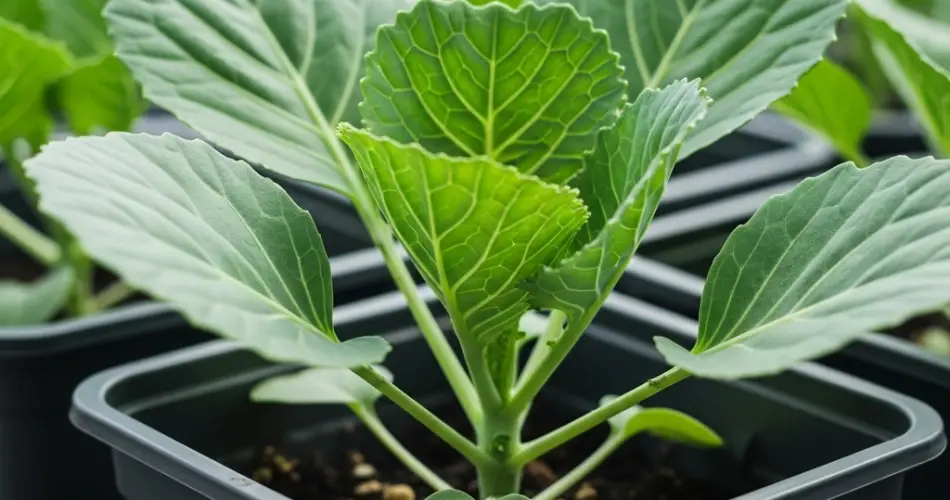Cabbage is a cool-season crop that’s not only versatile in the kitchen but also surprisingly easy to grow in small urban spaces. Whether you’re gardening on a balcony, rooftop, or compact patio, you don’t need traditional garden beds to enjoy a fresh cabbage harvest. With just a bucket and some basic gardening know-how, even city dwellers can grow this nutritious vegetable successfully.
Urban gardening with buckets is ideal for beginners and seasoned growers alike. It’s cost-effective, manageable, and a great way to reclaim a connection to your food—right in the heart of the city.
Why Buckets Work for Cabbage
Buckets are an excellent choice for growing cabbage in tight spaces. They provide the depth cabbage roots need and are easy to move around to catch the best sunlight or avoid heavy rain. Most importantly, they allow you to manage soil quality and drainage more effectively than most in-ground options.
Benefits of using buckets:
-
Affordable and widely available (5-gallon buckets are perfect)
-
Prevent compacted or poor urban soil from affecting growth
-
Help control pests by elevating plants off the ground
-
Can be reused season after season
Just make sure your bucket has good drainage holes drilled in the bottom to prevent root rot and soggy soil conditions.
Choosing the Right Cabbage Variety
Not all cabbage varieties are ideal for containers, especially when space is at a premium. Compact, early-maturing varieties are best suited for bucket gardening.
Top picks for bucket growing:
-
Golden Acre – Early variety with firm, round heads
-
Pixie Cabbage – Miniature cabbage perfect for small containers
-
Red Acre – Vibrant red heads that add color and flavor
-
Copenhagen Market – Classic heirloom that adapts well to buckets
These varieties don’t grow oversized and mature faster, making them ideal for shorter urban growing seasons or multiple harvests per year.
Soil Preparation for Buckets
Cabbage thrives in nutrient-rich, well-draining soil. Because buckets can dry out more quickly, you’ll need a mix that holds moisture but doesn’t stay soggy.
Suggested soil mix:
-
60% high-quality potting soil
-
30% compost or aged manure
-
10% perlite or coco coir for aeration and water retention
Blend in a slow-release fertilizer or organic amendment like bone meal before planting to promote strong root and leaf growth.
Planting Cabbage in a Bucket
Once your bucket is prepped with the right soil mix, it’s time to plant.
-
Fill the bucket to about 1–2 inches from the rim.
-
Transplant one cabbage seedling per bucket to ensure it has room to develop a full head.
-
Water thoroughly to help settle the soil and eliminate air pockets.
Place your bucket in a location that receives at least 6 hours of sunlight daily. Cabbage is a sun-loving plant, but it appreciates a bit of afternoon shade in hot climates.
Watering and Feeding Schedule
Cabbage needs consistent moisture, especially during the head-forming stage. In urban environments with lots of hard surfaces, pots can dry out fast—so it’s important to check them daily.
-
Water when the top inch of soil is dry, ideally in the morning.
-
Fertilize every 2–3 weeks with a nitrogen-rich liquid feed early on, switching to a balanced or phosphorus-boosted feed once heads begin forming.
-
Mulch the soil surface with straw or leaves to help retain moisture and regulate temperature.
Avoid letting the soil dry out completely, as this can lead to stunted heads or bolting (premature flowering).
Managing Pests and Diseases
Urban environments don’t guarantee immunity from pests. Even in a bucket, cabbage can attract common issues like:
-
Cabbage worms – Hand-pick or treat with neem oil or BT (Bacillus thuringiensis)
-
Aphids – Rinse off with water or apply insecticidal soap
-
Slugs and snails – Use organic bait or beer traps
Keep the bucket raised on bricks or plant stands to discourage crawling insects and promote airflow around the plant.
When and How to Harvest
Cabbage is ready to harvest when the head feels firm and has reached the desired size for the variety you planted.
-
Use a sharp knife to cut the head at the base, leaving outer leaves and the root intact.
-
Don’t pull up the entire plant—you may get smaller side shoots from the remaining stem after the main harvest.
Heads are typically ready in 70–90 days from transplanting, depending on the variety and growing conditions.
Final Tips for Urban Cabbage Success
-
Start your seeds indoors or purchase healthy transplants for faster results.
-
Rotate crops if reusing buckets—avoid planting cabbage family members in the same container in consecutive seasons.
-
Keep your bucket garden clean, removing fallen leaves and spent plants to prevent disease.
Cabbage is a rewarding crop that stores well, offers multiple culinary uses, and adds greenery to urban settings. With a little care and a single bucket, you can enjoy fresh, crisp cabbage from seed to table—even in the heart of the city.



